This is a section from a transcript of the
ABC Radio National programme '
Encounter' on
'Animals' 1st October 2006... I wish I had said it as well myself.
What sort of rights do animals have? This week Encounter explores the theology and the ethics of pets, vegetarianism and zookeeping.Binoy Kampmark: The modern concept of the zoo is a democratic one, in the sense that the public can now see it. In the historical sense, they used to be limited spaces for the aristocracy during the Enlightenment, or even earlier when we consider the Imperial Dynasts in China, these animals were to be kept as symbols of power and prestige.
David Rutledge: That's Binoy Kampmark, who's a Commonwealth Scholar at Selwyn College at the University of Cambridge. He's a regular visitor to Australia, and he recently published an article on zoos in Eureka Street magazine, in which he explored some of the apparent contradictions in the Australian love of native animals. Binoy Kampmark is in the ABC's Townsville studio in Far North Queensland.
Binoy Kampmark: There is this gladiatorial element here in Australia towards animals.
A gladiatorial element that's very much reflected in the way Steve Irwin's Australia Zoo operates, and the whole idea about the project of demystifying dangerous animals. On the one hand, you demystify them by playing games with them, by tormenting them, by jumping on them - but at the same time there is also this element of contest. The animal may bite back, the animal may eat the child, the animal may do something that is akin to its nature. But as human beings we can still deal with them.
And I think there is this constant juggling that goes on with the animals, especially in certain parts of Australia where people aren't quite sure how to deal with the wildlife.
David Rutledge: Australians like to project this image of easy familiarity with dangerous animals - you know, when we're trying to scare British tourists we'll say, 'oh yeah, snakes, no problem'. Do you actually see that in the Australians that you've met here?
Binoy Kampmark: Well, I think there is a contrived familiarity. But when it comes down to it, Australians are terrified about their animals. There is a very ambivalent relationship between Australians and the wildlife they seek to promote. And this is reflected, I think by - you mentioned Steve Irwin: the fact that even after he was so tragically killed by the barb of a stingray, there was a
retaliation against stingrays.
Suddenly this figure that had been touted as a conservationist, and who had been encouraging so-called wildlife warriors to promote his legacy, suddenly this relationship with animals is manifested in this most violent revenge against the very creatures that should have been protected in the first place. And this is one of the things that worried me in light of Irwin's passing. And it's in the language that is used in the whole context of conservation in this country - and I'm talking about not other conservationists, I'm talking about
Steve Irwin's particular brand of conservation - I find it rather peculiar that a conservationist does what he did. I
don't think a conservationist hauls crocodiles in front of cameras and jumps on them and pokes them, and wraps them up in rope.It's a rather peculiar means of conservation, so that we have the issue of conservation as a word that has to be defined.
We also have the issue of - this is used without irony at all in this country -
'The Croc Hunter'. I always thought it was a very odd term in the first place, a 'crocodile hunter',
what are we actually endorsing? An ironic sort of way of hunting crocodiles, but actually preserving them at the same time? There might be a nuance that I might have missed, I'm not sure.
And also certain words that are used in the language of Irwin's Australia Zoo. I was struck by the fact that this arena, this sort of amphitheatre, is called The Crocoseum. And when I first heard the word I was a bit taken aback, because I thought 'is it what I think it is? Is it based on a museum of artifacts, parading wild animals? Or is it based on the Colisseum?' - only we are referring back, of course, to the way animals were paraded in the arena in ancient Rome. And if that's the case, then it's quite sinister, because we're actually seeing - and it's probably more accurate - we're seeing animals paraded for sport in an arena.
David Rutledge: This ambivalence, though, it's taken to an extreme in this kind of context, but it's there just in the whole idea of zoos anyway, wouldn't you say? Where you have concern for animals in the abstract - you know, the gorilla with a capital G - but that comes at the cost of the suffering of a handful of individual animals that have to be incarcerated and displayed for the good of their brethren out there in the wild?
Binoy Kampmark: Yes, they're the privileged few. They suffer for the sake of their species, if you like. Yes, there is a problem in that. And this is the problem we can't really get beyond, if we accept the legitimacy of zoos - and I certainly do find I'm comfortable with the idea of zoos, but at the same time I realise that inevitably there is an element of suffering that's very hard to remove completely.
Andrew Linzey: If you want to preserve a species, then you must preserve it in its natural habitat. Because unless you can preserve its natural habitat, then there's no point in keeping it at all, because there'll be nothing to put it back into, do you see?
Because unless you can preserve the natural habitat, the species doesn't have a future anyway.
David Rutledge: Animal rights theologian, Andrew Linzey.
Andrew Linzey: Besides, you have to ask: what are children looking at when they see a lion, for example, behind a cage, behind bars? What they're looking at is -
well, they may be looking at the lion, but aren't they also looking at an exercise in human dominance and control? Is that really what we want young people, young children to learn?
David Rutledge: I sometimes wonder if the growth of concern about animals is congruent with a sense of disgust or anger at the terrible mess we humans have made of things - and the idea that animals, like children, are somehow less complicated, less compromised, and therefore easier to empathise with than humans. Is there any of that in your own mind, or your own heart?
Andrew Linzey: Well, it's in my mind, because I think it's also in the bible. If you look at Job, for example, human beings are compared most unfavourably with the Behemoth and the Leviathan - which are, I understand from those people who know about these things, the equivalent of the modern-day alligator and whale. So there you have it, you see, and despite what Steve Irwin has done, that in holy scripture we're compared unfavourably with alligators.
David Rutledge: What point's being made there in the Book of Job?
Andrew Linzey: Well, I think the point is being made, amongst other things, that we alone amongst all the creatures of the earth, are capable of debasing ourselves. We are the most lovely, and the most un-lovely species of all. That our kind of violence is out of all proportion to any other kind of violence. I mean, Auschwitz, Hiroshima, Dresden, Nagasaki, these are human inventions. Other animals do terrible things to other animals, but the systematic, ruthless killing that one has seen, for example, in the 20th century, is something out of kilter even with the worst thing you can find in nature - and I don't romanticise nature.
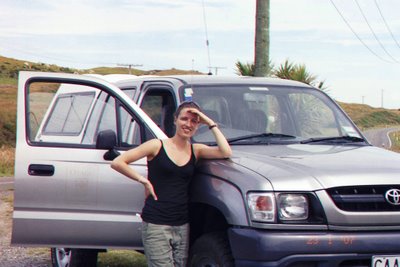

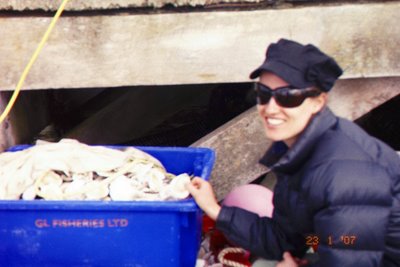
 This old boat shed was only possible to reach at low tide
This old boat shed was only possible to reach at low tide
 Katie filming on the now retired oyster boat the 'Monica'
Katie filming on the now retired oyster boat the 'Monica' Katie filming Bluff from pier
Katie filming Bluff from pier Bluff habour
Bluff habour





 Shooting rabbits!
Shooting rabbits! Our very handsome rabbit
Our very handsome rabbit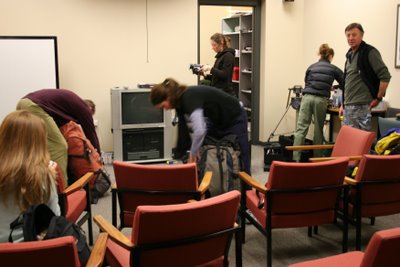
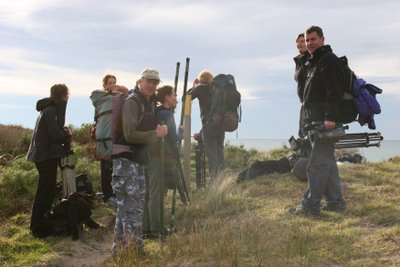 Walking to Victory Beach.
Walking to Victory Beach. Setting up camp - Victory Beach
Setting up camp - Victory Beach
 Filming Penguins from inside our hide.
Filming Penguins from inside our hide.

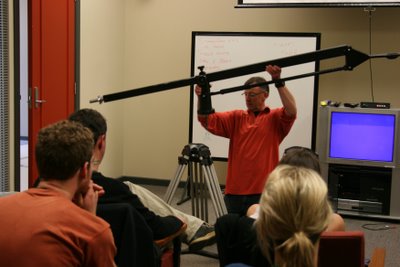
 Trying to film a flower using the Jib-arm...Ummm, it didn't really work so well.
Trying to film a flower using the Jib-arm...Ummm, it didn't really work so well. Paul demonstrating Macro filming.
Paul demonstrating Macro filming. Kaite
Kaite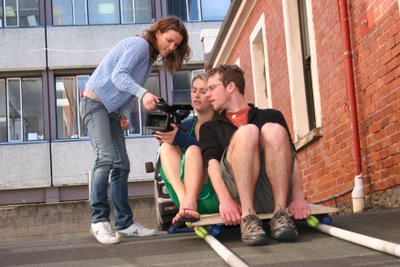 Still trying to work out how to use the camera...
Still trying to work out how to use the camera... mmm...we have no idea how to use this camera!
mmm...we have no idea how to use this camera!
 Bored? No, just dreaming of aerial footage!
Bored? No, just dreaming of aerial footage! Paul reminds us not to slam the doors!
Paul reminds us not to slam the doors!






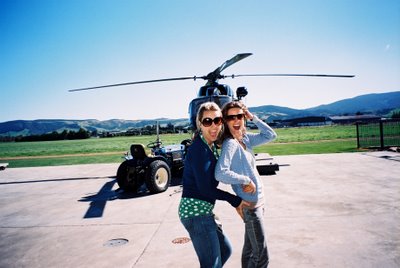
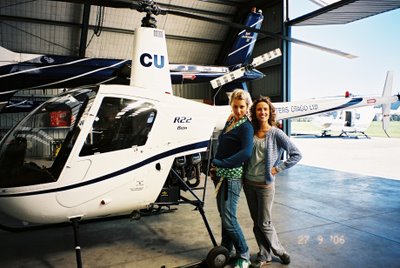
 Dancing with my champion ballroom-dancing housemate
Dancing with my champion ballroom-dancing housemate


